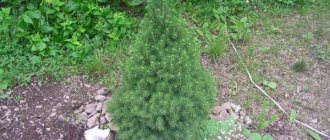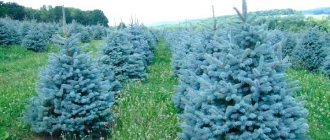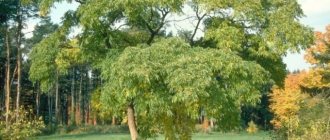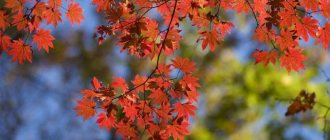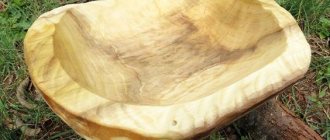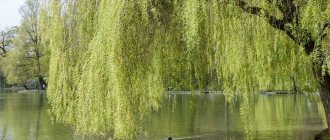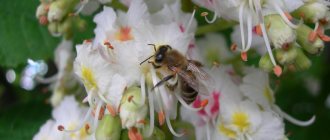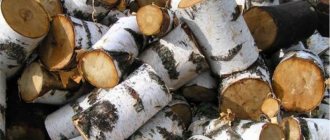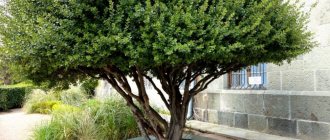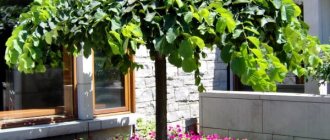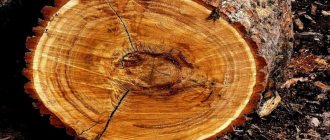For lovers of landscape art, conika spruce is familiar with its cultural forms. A small tree with a fluffy conical crown is used more often than other conifers by designers to decorate open ground, in the form of a tub plant - terraces, balconies and even home interiors.
Native to Canada in nature, it is the result of a natural mutation of the gray spruce, with an unusually regular cone-shaped crown. The plant has extreme endurance and unpretentiousness. These features make it possible to grow a tree in any region of Russia.
Botanical description
Canadian Spruce (Picea canadensis conica) is a dwarf variety of gray Spruce (Picea glauca) of the Pine family (Pinaceae). In some sources it is called Spruce Glauca Conica (Picea Glauca Conica). The very first of the species' hybrids was discovered. Cultivated since the beginning of the twentieth century. It has a natural, pronounced lowered conical crown shape that does not require correction.
The root system is compact but powerful, with a shortened taproot. With age, it grows horizontally close to the surface. Provides the plant with high wind resistance. Numerous branches growing from the very root are located in whorls, slightly curved with short internodes, forming a narrow, dense, strictly conical crown with a diameter of up to 2 m. The buds are brown, not resinous.
The bark of the trunk is thin, light brown, covered with small scales. Young shoots are grayish-yellow with a shine, in grooves with slight pubescence. The needles are sickle-shaped, very soft. Young needles are colored light green; with age they acquire a bluish tint. Their length is from 8 to 18 mm. When rubbed they have a pleasant smell.
Conica spruce (Picea conica) grows slowly: 3-6 cm per year. Further growth slows down to 2-3 cm per year. By the age of 10 years, the tree will have risen 1.5 m; at 30 years old - 2-2.4 m. In favorable conditions, the height of an adult tree reaches a maximum of 3-4 m.
The crown of a small seedling is shapeless, but at 6-7 years of age a growth peak of up to 10 cm occurs and the crown becomes pubescent and takes on the correct shape.
Fruiting of Konica is a rare phenomenon. If it happens, small bright brown cones densely cover the branches from the middle of the tree to the top, serving as an additional decoration. The lifespan of Glauka Koniki in the landscape is 30-50 years.
How to choose the right tree for your home?
If you like the European tradition of decorating container trees for the New Year, and you are ready for the difficulties of caring for them at home, then choose konica spruce in the store based on the following criteria:
- Don't buy holiday decorations decorated with glitter and fake snow. These decorations are applied with aerosols and clog the pores of the needles. The tree will die anyway.
- Gently move the barrel. If it wobbles in the pot, it means that the tree was recently transplanted here from another place. In this case, the roots are necessarily damaged, and the plant has little chance of survival.
- If the volume of the pot is too small in relation to the crown, do not take this tree. To develop a good crown, the tree must have strong roots. And most likely, when transplanting into a container, part of the root system was cut off with pruning shears, and the life of the crown was maintained with stimulants.
- Carefully pick up the soil from the side. If the tree grew in this land from the very beginning, then the roots will intertwine the entire space, forming a dense lump. This is a good seedling.
- Cuttings of roots that are not woven together indicate that the konika was grown specifically for the holiday, and it will not survive in the future.
- Many young shoots at the ends of the tree in winter are a signal that the tree was untimely awakened. Soon it will start to hurt.
- A healthy Christmas tree has dense, evenly colored needles, a bare bottom trunk and roots emerging from the drainage holes of the pot.
In general, the ideal potted crop for a New Year's interior is considered not conica, but araucaria. This is the only conifer intended for growing at home, so it will easily survive both winter transplantation and warm indoor conditions.
If you see a lot of roots in a pot, bunched into a tight ball, it means that the Christmas tree has been sitting in this soil for more than one year.
The soft needles of araucaria look no less interesting in the New Year's tinsel, but you will be sure that the seedling will survive after the holidays
If you choose a seedling unsuccessfully and it begins to die, pick all healthy branches 7-10 cm long from the tree and place it in a glass of water diluted with a root growth stimulator. Perhaps by spring some of them will take root, and you will have your own planting material.
The branches of the Christmas tree must be plucked by hand in order to preserve the thickening at the end, called the “heel”. It accelerates root formation
Variety varieties
The biological feature of the low-growing Canadian spruce Konica, which contributes to the natural degeneration of the variety, served as the basis for the creation of new dwarf hybrids. How this happens remains a mystery.
Varieties derived from natural mutation:
- Picea glauca conica Alberta Globe. The Alberta Globe variety has been cultivated since 1967. A dwarf variety with a spherical crown. At 10 years of age, the crown diameter is about 30 cm. The maximum height of an adult plant is 90 cm with a crown width of 120 cm. Frost-resistant. Awarded a gold medal in 1968.
- Picea glauca conica Blue Wonder. It has become known since 1984. It is characterized by rapid growth: at the age of 5, growth increases to 20 cm; by the age of 20 it reaches 2 meters in height and 80 cm in volume; The color of the needles is blue-green. The parameters depend on the habitat and growing conditions.
- Picea glauca conica Gnom. A low-growing form with gray-green needles and a narrow pyramidal crown, it grows just over a meter.
- Picea glauca conica Daisy`s White. Slow growing variety. It is distinguished by the variability of its needles from yellow to white; after six months the needles turn green.
The popularity of conifers in the landscape, frost resistance and ease of care encourage breeders to create hybrid forms. Every year, the assortment of nurseries is replenished with both mutant varieties and selection products.
The Maigold variety (Picea glauca conica Maigold) has become widespread in Russia. Opened in 1979 in Belgium. Characteristics and appearance are similar to Daisy White. In our climate, a 10-year-old tree reaches only 80 cm. With the same data, a new variety of selection, Sun on the Sky (Picea glauca Sun on the Sky).
Very popular bluish coniferous varieties: Sanders Blue (Picea glauca Sander`s Blue), Alberta Blue (Alberta Blue) and various hybrids.
How to transplant to another place
A purchased seedling or one grown at home is allowed to be moved outside. The ideal period for this process is considered to be early spring:
- Before replanting the plant, it must first be hardened off by taking it outside first for 5 minutes, then for a couple of hours, then for the whole day.
- It is recommended to transplant in cloudy weather.
- When replanting, you need to leave the root collar at ground level.
- After transplantation, the seedling should be covered with breathable material for several days.
Did you know? Young spruce needles contain much more vitamin C than lemons.
Spreading
In its natural habitat, Glauka is found in the habitats of its ancestor, the gray spruce (picea glauca): in the forests and foothills of Canada from Labrador to Alaska, where it was discovered in 1904 on the shores of Lake Lagan. The plant is not uncommon; under natural conditions it is long-lived and grows up to 5 m in height. The original shape of the crown, which does not require formation, and wind resistance served as a basis for its spread to other regions. Grows successfully in areas where other spruce trees grow.
Konica spruce is artificially bred in nurseries in the Netherlands, Holland and Russia for landscaping, decorating room interiors, and is used as wind protection. On the eve of the New Year holidays, gift konika spruce trees with soft, safe needles and a real spruce scent are purchased as a festive attribute.
At home
Glauca conica is often found in flower shops before the New Year holidays. It is bought as a replacement for a Christmas tree. At home, the plant most often dies. All conifers need low temperatures during the dormant period (winter), high humidity, and diffused light. You can try to save the spruce until spring and replant it in open ground. The culture should be carefully looked after.
For the tree, houses create comfortable conditions that are as close as possible to the natural environment:
- A store-bought plant needs to be replanted. A special soil for conifers is suitable. The procedure is not carried out during the rest period.
- High air humidity is important, otherwise the needles will fall off. The plant is sprayed 5-6 times a day and placed next to containers of water.
- Do not allow the soil in the pot to dry out.
- Diffused light will help avoid sunburn. The pot must be constantly turned.
- In winter, during the dormant period, choose the coolest place (glazed loggia, space between window frames, veranda). The lower the temperature, the greater the chance of saving the specimen. The temperature of the water for irrigation should be equal to the air temperature.
- Do not allow the earthen clod to freeze and damage the roots. The pot is wrapped in a warm cloth. The crown does not need shelter.
Planting and care
Canadian spruce Konica is unpretentious and hardy, but proper planting and nuances of care will significantly extend its healthy life and decorative appearance. When choosing a zone, you should take into account its low resistance to dust and gas contamination. Landing within the city and near the road is not recommended.
Where to plant Konica
Konica spruce has a positive attitude towards the sun, but is afraid of the burning rays of spring - the soft sensitive needles burn out, and the recovery process is long. Tolerates light shade, but canopy density may suffer. An open, free, ventilated space on the sunny side of a plot with moisture-absorbing fertile soil is an ideal planting site. Constriction by trees or buildings threatens Konika with diseases.
The density and splendor of the crown depend on the composition of the soil. Loams fertilized with humus with a pH of 4-5.5 contribute not only to decorative properties, but also to healthy longevity. Konica spruce will grow in any soil, but it is worth ensuring breathability and sufficient moisture.
When to plant
The favorable time to plant or transplant Glauka seedlings into open ground depends on the climatic conditions of the region. In central Russia it is spring, late April or early May. Over the summer, the tree will take root well and grow stronger if you water it regularly. In the fall, at the beginning of September, there is also time to take root before frost, especially if the autumn is rainy. There is sufficient accumulation of moisture by the roots, and the autumn coolness and air humidity will help to adapt faster.
Spring sunburn on a conifer. Covering with special material will prevent troubles
As for specimens with a closed root system, they are planted at any time of the growing season, but cool soil promotes healthy rooting.
Selection of seedlings and planting algorithm
Mostly, Canadian Konica spruce is sold in containers. Pay attention to the flowerpot. In a good plant, the diameter of the pot corresponds to the circumference of the crown, because its roots are powerful and take up a lot of space. A small container cramps them, the suction roots die off, making rooting difficult. Juicy healthy greenery and a large flowerpot are the criteria for choosing a seedling.
Before planting, the flowerpot with Konika is thoroughly saturated with water so that when removing it from the flowerpot, the suction roots are not damaged. The tree is planted to the depth of an earthen clod. If the root system is open, the root collar is located at surface level.
Landing algorithm:
- At the intended planting site, dig up the soil 15-20 cm deeper and wider than the size of the flowerpot so that the roots spread freely.
- The soil is enriched with humus, acidic peat, and superphosphate.
- The planting hole corresponds to the height of the flowerpot, but is wider so that it is possible to cover the roots with soil.
- Freed from the flowerpot, the seedling is placed in a hole.
- The free space is filled with earth and compacted.
The soil is thoroughly watered and mulched. Peat, coniferous litter, and softwood sawdust are used as mulch. This material helps maintain soil acidity.
Nuances of care
The peculiarity of Glauka is that she requires a minimum of attention. In hot, dry weather, watering with crown irrigation will be required. It is held late in the evening. Weeds are removed from the tree trunk in a timely manner, while loosening shallowly. Formation of the crown of Konike is not required, but sanitary pruning in the spring is carried out every year. She easily tolerates a curly haircut.
Optimal time for curly pruning: early spring (March-April). The sections are treated with garden ointment with a fungicide, preventing fungal infection
To protect delicate needles from spring solar aggression and severe frosts, shelter is required. All kinds of shields, wrappings with burlap or other material are used. The protection is designed in such a way that it dissipates the sun's rays, but does not interfere with ventilation.
An important stage in caring for Konica spruce is maintaining the nutritional value of the soil. Excess nitrogen is harmful to conifers. Potassium, magnesium and phosphorus are the main minerals that supplements should contain. Nitrogen is also needed, but in minute quantities.
In the spring, 3-5 kg of humus is added to the tree trunk circle, carefully mixing with the top layer of soil. In the fall, feed with a potassium-phosphorus mixture. Mulch with a 5-10 cm layer of peat, which is also embedded in the ground in the spring. Special additives for conifers also saturate the soil with minerals.
Spruce Konika in landscape design
As a rule, in landscape design Konica is used both in single and group plantings, as well as in flower beds, mixborders and rock gardens.
It looks very impressive as a tapeworm (in single plantings) in a fill or on a lawn.
If you decide to make a composition, then it is very beautiful to plant it with other miniature (dwarf) coniferous and deciduous plants.
Due to the fact that the plant is relatively slow-growing, in principle, it can also be used for container growing.
It is worth considering that the Canadian Konica spruce is not adapted to the urban environment , especially to pollution, in other words, it cannot be planted near the road.
Reproduction of Canadian spruce Konica
Gardeners increase the number of conifers on their site using cuttings. There is no other way to propagate Glauka. 1 or 2 year old shoots are rooted. Cuttings are cut from the middle branches of the tree in the summer (June-July) on a cloudy day or evening.
The shoots with a heel measuring 8-11 cm are more viable. The planting material is kept in a growth stimulator for 24 hours. The cuttings are placed in a container with moist, fertile, loose soil, deepened by 2-3 cm.
The seedlings are provided with greenhouse conditions with regular ventilation and necessary moisture. The rooting process is long, about 24 weeks. In the process, fertilizing with mineral additives is carried out for conifers.
Top dressing
Decorative spruce needs to be fed once a month. It is recommended to apply fertilizing components from mid-spring to the end of July. Due to later feeding, the tree may not have time to prepare for winter.
For decorative Konica, complex fertilizers for coniferous plants are used. Such substances not only saturate the tree with nutrients, but also maintain optimal soil acidity.
To strengthen the spruce and its proper development, it should be treated 2-3 times a season with biostimulating preparations: Epin or Zircon.
Diseases and pests
The Canadian Konica spruce, like all plants, develops diseases due to improper placement, agricultural practices, and lack of attention. If a red coating appears on the branches and the needles fall off, this is tracheomycosis, which affects the roots of young trees. The disease cannot be cured. Dangerous for surrounding plants. There is no treatment. The tree is burned along with the roots, and the place where it grew is treated with a fungicide.
Pine needle rust is a fungal disease. The signs of the disease are clear and easily distinguishable: small 0.5 cm orange growths (spore carriers) appear on the bark of the shoots. After some time, the needles turn yellow and fall off. Treatment: spraying with copper-containing preparations. Treatment is carried out several times during the month. It is not recommended to plant pome fruit crops next to conifers: apple tree, pear tree, as they are an “incubator” for rust spores.
An equally dangerous fungal disease is Schutte. It occurs from stagnant moisture in cramped and weed-filled plantings. It appears in early autumn as drying, yellowing of the needles with barely noticeable brown spots. The following spring, the needles turn black, become covered with plaque and fall off, becoming a source of infection. Treatment: fallen pine needles, cut diseased branches are burned, treated several times with fungicides or copper-containing preparations.
Glauka often suffers from root rot, which occurs from stagnant moisture in poorly aerated soils. By mid-summer the plant looks depressed, growth growth is poor. The tree is dug up, the damaged softened roots are cut off, and transplanted to a new, more favorable place.
There are several dozen insect pests, some sucking and gnawing: aphids, scale insects, false scale insects, mealybugs, spider mites and others. They are difficult to notice as they are very small, but cause great damage by sucking juices from bark, pine needles or roots. A visible sign is a sticky coating on the vegetative parts. Pest control includes mechanical and chemical methods. Preventive spring treatments with insecticides are an effective remedy. Preparations: Pinocid, Extraflor (garlic based).
Colonies of scale insects. Trees growing in the shade and on dry soils suffer. Spraying with the insecticide Actellik, Aktara, Bitoxibacillin will help get rid of the pest.
When to plant (transplant) Canadian spruce Konica in open ground: optimal timing
It is better to plant Konica so that the spruce is well rooted and strong by winter, but planting can also be done in the fall . For example, for the Middle Zone, the approximate planting dates for Koniki spruce in the spring are the end of April-beginning of May, and in the fall - the end of August-beginning of September.
However, if your autumn is long and warm (you live in the south of Russia), and in the spring it is most often “from boots to sandals”, in other words, the heat can quickly set in (and the spruce that has not yet taken root will get sunburned), then it is better to plant Konik in the autumn.
Note! However, container plants can be planted all year round. Nevertheless, the period when young growths actively begin to form is considered not very successful.
If you were able to purchase a seedling only in the summer , then after planting you should regularly (once a week) abundantly water the young spruce, pouring out at least 10 liters, and also carry out shallow loosening (5-6 cm).
It is also believed that it is very good to plant conifers in winter , because... at this time of year, trees are completely at rest (sleeping), which means they will be less damaged and, accordingly, the adaptation process will be much easier.
Using dwarf spruce in the landscape
Konika spruce is an ideal tree for creating landscape compositions. Slow growth allows the tree to be used even in a flower bed, rock garden, or as a frame for paths. Planted as a repeating element in front gardens and ridges. The shape and color of the crown fits perfectly with any flowers and shrubs.
In the design of mixed-style gardens, conika spruce emphasizes the beauty of neighboring plants or itself acts as the center of the group.
Growing Konika spruce on the site will not take much time and will not create much trouble if you approach this issue correctly. The correct location of the tree accentuates the sophistication of the composition.
How to care
How to grow a strong and healthy coniferous tree
The main requirement is to create the right conditions and ensure proper care of the tree.
How to care for Canadian spruce: how to water it, how much and what kind of fertilizer to apply, how to prepare it for winter? The gardener must know the answers in order to avoid mistakes when growing and prevent the death of the tree.
Key rules of care:
- Regular watering in hot summers. Long droughts are destructive for Konica spruce, so on hot days young plants require frequent watering - at least 3 times a week. To prevent lethargy, the needles should be irrigated in the evening after sunset. If the summer turns out to be rainy, watering should be reduced to avoid waterlogging of the soil.
- Loosening the soil to provide air access to the roots.
- Timely pruning of dry or diseased branches. Manipulation should be carried out in the spring after the tree has hibernated. The cuts should be treated with garden varnish. The tree does not require crown trimming; however, it tolerates formative pruning well.
Young trees are covered for the winter for the first 2-3 years to prevent frostbite and sunburn. Materials that allow air to pass through well, such as spruce branches or burlap, are suitable for this. The crown must be covered in the fall before frost sets in. If the winter is expected to be frosty, you need to additionally insulate the tree trunk with sawdust to protect the root system.
